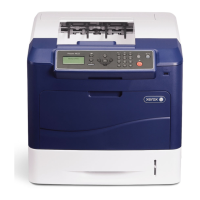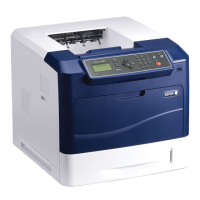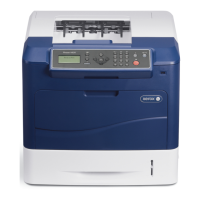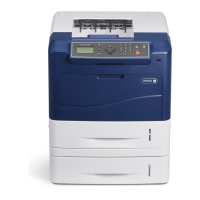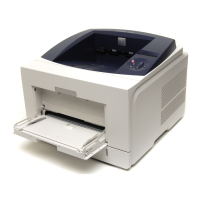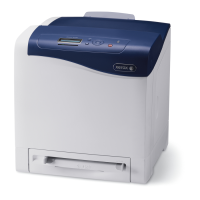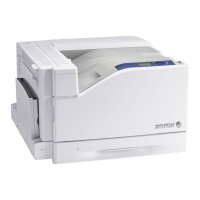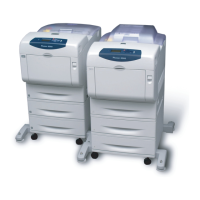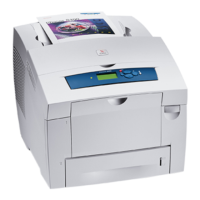2-2 Phaser 4500/4510 Service Manual
Theory of Operation
Overview of the Phaser 4500/4510 Laser Printer
Summary of the Printing Process
The Phaser 4500/4510 print process consists of the following steps:
1. Charge – The print cartridge contains a bias charge roller that uniformly
distributes a negative electrical charge over the photoconductive drum
surface.
2. Exposure – The laser assembly scans the surface of the photoconductive
drum, which is located inside the print cartridge. The laser diode
assembly produces a laser beam which is turned on and off according to
a data signal. A 12-sided polygonal mirror in the scanner assembly is
rotated at a specified speed. The laser beam is reflected off of the mirror
and onto the drum surface through a series of lenses and mirrors. The
laser beam scans the drum surface from one end to the other, neutralizing
the negative charge to create one line of a latent image on the surface.
The drum is rotated and the scan process is repeated to form an image
on the drum surface.
3. Development – A magnetic roller in the print cartridge carries a thin layer
of toner supplied by an agitator in the cartridge's toner compartment. The
charging and metering (CM) blade inside the cartridge applies a negative
charge to the toner and spreads the toner onto the magnetic roller. The
negatively charged toner is transferred to the areas of the drum surface
that have been discharged.
4. Paper transport – Paper size sensors determine the length of the media.
Four tabs (one fixed, three movable) located in the paper tray indicate the
location of the length guide and thereby identify the media size. Switches
located in the left tray guides detect the position of four tabs located on
the paper tray. The printer uses a three-roller system to pick paper. Two
springs raise the tray's lift plate, along with the paper stack, against the
nudger roller of the paper feeder assembly. To pick paper, the nudger
roller advances the top sheet to the feed roller and retard roller. The retard
roller prevents multi-picks. The feed roller advances the paper to the turn
pinch rollers, which feed it to the registration rollers. The registration
sensor is the first sensor to detect paper.
5. Transfer – The transfer roller is driven by a gear on the print cartridge. The
pressure of the transfer roller against the drum assists in driving the paper
through the transfer area. The transfer roller applies a positive charge to
the rear surface of the paper. The negatively charged toner image on the
drum is attracted to the positive charge on the rear surface of the paper,
causing the image to be transferred from the surface of the drum onto the
paper.
6. Discharge – The detack saw, located on the transfer roller assembly,
helps to separate the paper by partially neutralizing the charge holding
the paper to the drum.
7. Fusing – The paper is driven into the fuser, which uses heat and pressure
rolls to melt and bond the toner onto the surface of the paper. Heat roller
fingers inside the fuser peel off the leading edge of the paper from the
Heat roller to prevent the paper from becoming wound around it. An exit
sensor detects paper exiting from the fuser.
8. Cleaning – A cleaning blade in the print cartridge scrapes off toner
remaining on the drum surface after transfer has occurred. Then, the
latent charge pattern remaining on the photoconductive drum is
neutralized to prepare the drum for the next exposure cycle.
9. Paper exit – The paper is then advanced upward into the exit rollers and
into the selected output tray.
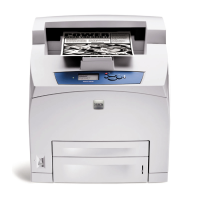
